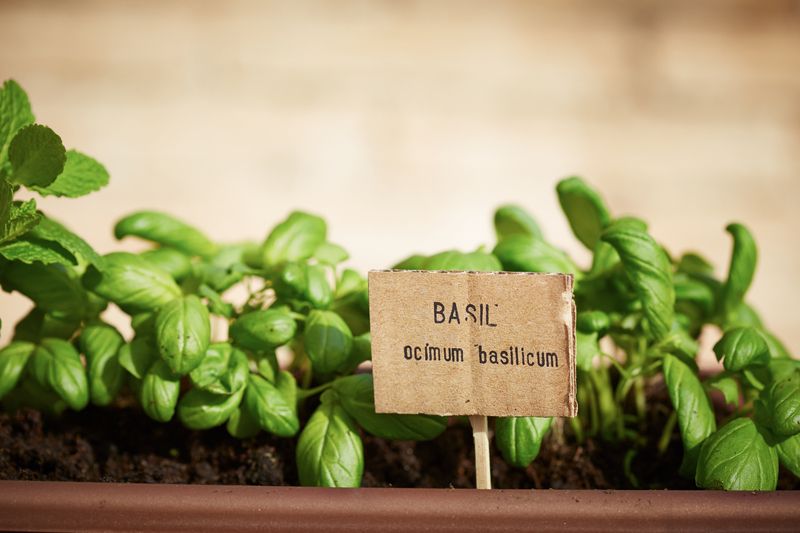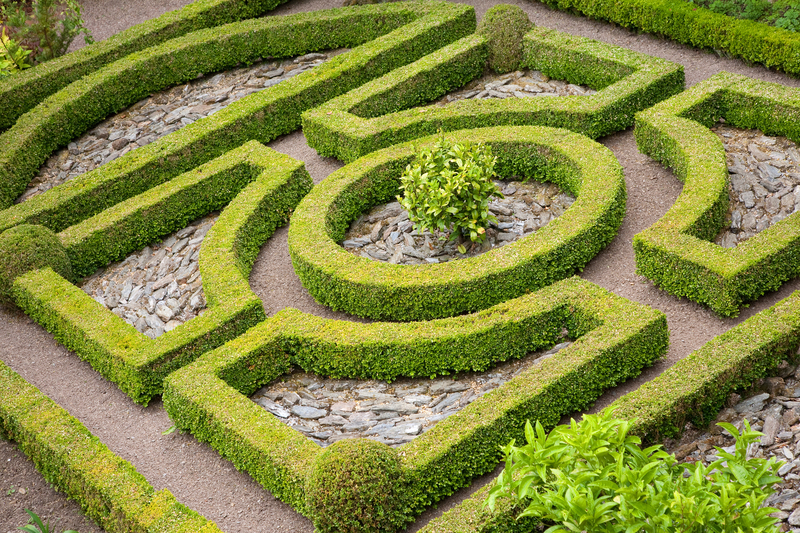Designing a Playful Haven: Crafting a Child-Friendly Garden
Posted on 02/07/2025
Designing a Playful Haven: Crafting a Child-Friendly Garden
Transforming your backyard into a playful haven is one of the most rewarding choices you can make for your children's development and happiness. A child-friendly garden is more than a safe place to play--it's a magical space where imagination blossoms, curious minds explore, and little hands discover the wonders of nature. In this comprehensive guide, we'll explore creative strategies, practical landscaping solutions, and inspiring ideas for designing a kid-friendly garden that delights and educates children of all ages.
Why Create a Child-Friendly Garden?
A child-focused garden does more than beautify your home--it shapes your child's relationship with the outdoors. Here's why investing your time and energy in crafting a children's outdoor sanctuary is so essential:
- Encourages physical activity: Outdoor play boosts fitness and burns off energy.
- Promotes creativity: Natural landscapes inspire imaginative games and artistic expression.
- Supports learning: Gardening teaches science, responsibility, and appreciation for the environment.
- Fosters well-being: Nature play reduces stress, boosts mood, and supports healthy social interactions.
By embracing play-focused garden design, you can provide your children with lifelong memories and valuable life skills.

Key Principles of Child-Friendly Garden Design
Designing a playful garden for kids involves balancing fun, functionality, and safety. Consider these core principles as you plan your outdoor transformation:
- Safety First: Choose non-toxic plants and avoid sharp or hazardous materials.
- Stimulate the Senses: Incorporate colors, scents, textures, and sounds children love to explore.
- Encourage Exploration: Create winding paths, hidden corners, and interactive features.
- Allow Flexibility: Design zones for different ages and interests, with room to evolve as kids grow.
- Low Maintenance: Select durable materials and easy-care plants to ensure dependable enjoyment.
Essential Elements of a Kid-Centric Garden
Let's delve into the key child-friendly garden features that combine education, adventure, and relaxation.
1. Safe Play Surfaces
- Artificial Grass: Provides a soft, all-weather play area that requires minimal upkeep.
- Bark Mulch or Rubber Mulch: Cushions falls around climbing equipment.
- Natural Lawns: Classic, versatile, and gentle on little feet--just ensure regular maintenance and remove sharp objects.
Tip: Avoid gravel, concrete, or paving near play zones to minimize scrapes and injuries.
2. Interactive Play Equipment
- Swings and Slides: Timeless favorites for thrilling active fun.
- Climbing Frames: Develop motor skills and confidence with age-appropriate structures.
- Balance Beams, Stepping Stones, and Obstacle Courses: Encourage coordination and imaginative games.
- Sand and Water Play: Sandbox, mud kitchen, or water table for sensory adventures.
3. Spaces for Imagination
- Secret Dens or Teepees: Private hideaways for quiet contemplation or imaginative play.
- Storybook Nooks: Hidden reading spots with cushions and shade, fostering literacy and relaxation.
- Outdoor Art Corners: Chalkboard walls, easels, or spaces for crafts to spark creativity.
4. Gardening Zones for Kids
- Raised Beds or Containers: Child-sized planters for vegetables, herbs, or flowers.
- Miniature Gardens: Fairy gardens, dinosaur lands, or wildlife habitats designed for little hands.
- Composting Area: Teach sustainability by letting kids help recycle garden waste.
5. Sensory Gardens
Children learn by engaging all their senses. Design a sensory-focused garden for children using these features:
- Vibrant Colors: Plant sunflowers, nasturtiums, marigolds, and other eye-catching blooms.
- Inviting Scents: Use lavender, mint, lemon balm, and scented geraniums.
- Touch-Friendly Plants: Include lamb's ear, ornamental grasses, or soft moss.
- Natural Sounds: Add wind chimes, rustling bamboos, or a splashing fountain.
6. Wild Zones for Wildlife
- Ponds: Install a shallow, wildlife-friendly pond (with supervision) for observing tadpoles and insects.
- Bug Hotels and Bird Feeders: Attract butterflies, bees, ladybugs, and feathered friends.
- Native Shrubs and Wildflowers: Provide shelter and food for local wildlife.
Planning Your Child's Garden Sanctuary
Ready to start mapping out your child oriented backyard retreat? Follow this step-by-step process to ensure success:
Step 1: Assess Your Space
- Size and Shape: Measure available areas and note sun/shade patterns.
- Existing Features: Identify mature trees, fences, or utility lines you'll need to work around.
- Safety Considerations: Locate potential hazards such as ponds, sheds, or steep slopes.
Step 2: Consult the Kids!
Involve your children in the design process. Ask:
- What outdoor activities do they love?
- Are they interested in gardening, sports, exploration, or creative play?
- Which colors, animals, or themes excite their imagination?
Step 3: Divide Into Zones
- Active Play Zone: For swings, slides, sports, or tree climbing.
- Quiet Corner: A shaded bench or reading nook for downtime.
- Nature Zone: Wildflower patches, bird stations, or bug hotels for wildlife watching.
- Creative Area: Art, crafts, or music corners.
Tip: Soften boundaries with hedges, curved pathways, or tall flowers to create a sense of adventure.
Step 4: Choose Child-Safe Materials
- Non-toxic finishes: Avoid chemical treatments or paints near edible or sensory plants.
- Wood and composites: Go for smooth, splinter-resistant materials for decks, seats, and play structures.
- Natural stone or timber edging: Use for beds and paths--avoid sharp corners.
Step 5: Select Kid-Friendly Plants
The best plants for a child's garden are hardy, easy to grow, and safe if touched or tasted (within reason).
- Flowers: Sunflowers, pansies, snapdragons, calendulas.
- Edibles: Strawberries, cherry tomatoes, peas, carrots, radishes.
- Fragrant picks: Lavender, mint, chives, lemon balm.
- Non-toxic shrubs: Dogwood, fuchsia, hibiscus, hydrangea.
Creative Ideas for a Truly Inviting Children's Garden
Design with Themes
- Pirate Adventure: Build a ship-shaped sandpit and treasure island.
- Enchanted Fairytale: Fairy doors in tree trunks, whimsical stepping stones, and woodland plants.
- Outdoor Classroom: Paint numbers or letters on stones or logs for playful learning games.
Incorporate Natural Play Features
- Willow Tunnels and Living Dens: Plant fast-growing willow or bamboo to form natural hideouts.
- Log Balancing Pathways: Arrange logs or stumps at different heights, encouraging coordination.
- Boulders and Mounds: Create opportunities for climbing and imaginative play.
Relaxation Spaces for All Ages
- Family Picnic Area: Shade, a sturdy table, and bug-repelling plants for stress-free alfresco meals.
- Reading Hammock or Swing Chair: A cozy retreat for young bookworms.
- Outdoor Chalkboard Wall: Easy to install--hours of creative fun that wipes clean.
Attract Birds, Butterflies, and Pollinators
- Butterfly Garden: Plant nectar-rich species like buddleja, echinacea, and milkweed.
- Bee B&Bs: Hang bee hotels and plant lavender, sage, or foxgloves.
- Bird Baths and Nest Boxes: Watch feathered friends flit and thrive.
Safety Tips for a Child-Friendly Garden
- Ensure good sightlines from the house so you can supervise children easily.
- Install sturdy fencing and secure gates to prevent wandering.
- Cover ponds or water features when not in use--water should only be used with adult supervision.
- Store garden tools, chemicals, and sharp objects out of reach.
- Test play surfaces for slip resistance and shock absorption.
Maintaining and Involving Kids in the Garden
A child-friendly garden isn't just about the finished design--the joy comes from growing, experimenting, and exploring together. Extend the magic by:
- Giving each child a small patch or container to tend and decorate.
- Introducing easy tasks like watering, planting seeds, or harvesting produce.
- Setting up regular wildlife hunts--count bugs, track birds, or spot butterflies.
- Crafting garden decor--paint pots, make wind chimes, or create stepping stones.
- Sharing stories or holding picnics outdoors to nurture love for nature.

Frequently Asked Questions about Designing a Child-Friendly Garden
How can I make a small garden child-friendly?
Use vertical gardening, compact play equipment, and multipurpose features (like a storage bench with cushions). Even a balcony can offer edible planters, sensory tubs, or a chalkboard wall.
Which outdoor surfaces are best for a kids' play garden?
Look for soft, durable, and low-maintenance materials like artificial turf, bark chips, or rubber surfacing for play zones. Edges should be smooth and trip hazards eliminated.
What plants are safest for a children's garden?
Choose edible, non-toxic, or fuzzy-leaved plants such as strawberries, snapdragons, sunflowers, nasturtiums, and herbs. Steer away from anything with sharp thorns or toxic berries.
How can I keep my child's garden engaging as they get older?
Adapt zones for evolving interests--swap sandpits for sports nets, create a teen chill corner, or exchange fairy gardens for more adventurous climbing features as kids mature.
Conclusion: Creating Lasting Memories in Your Child-Friendly Garden
Designing a playful haven outdoors is an act of love that nurtures your child's physical, emotional, and creative growth. By thoughtfully blending safe play areas, nature zones, and hands-on gardening activities, you create a unique backyard retreat that evolves with your family. From sensory gardens to secret hideouts, every feature you choose becomes a building block for cherished family moments.
Start small, dream big, and let your garden become a joyful learning space--a place where your children can connect with nature and invent their own magical stories for years to come.
Ready to design your child-friendly garden? The adventure starts now!

